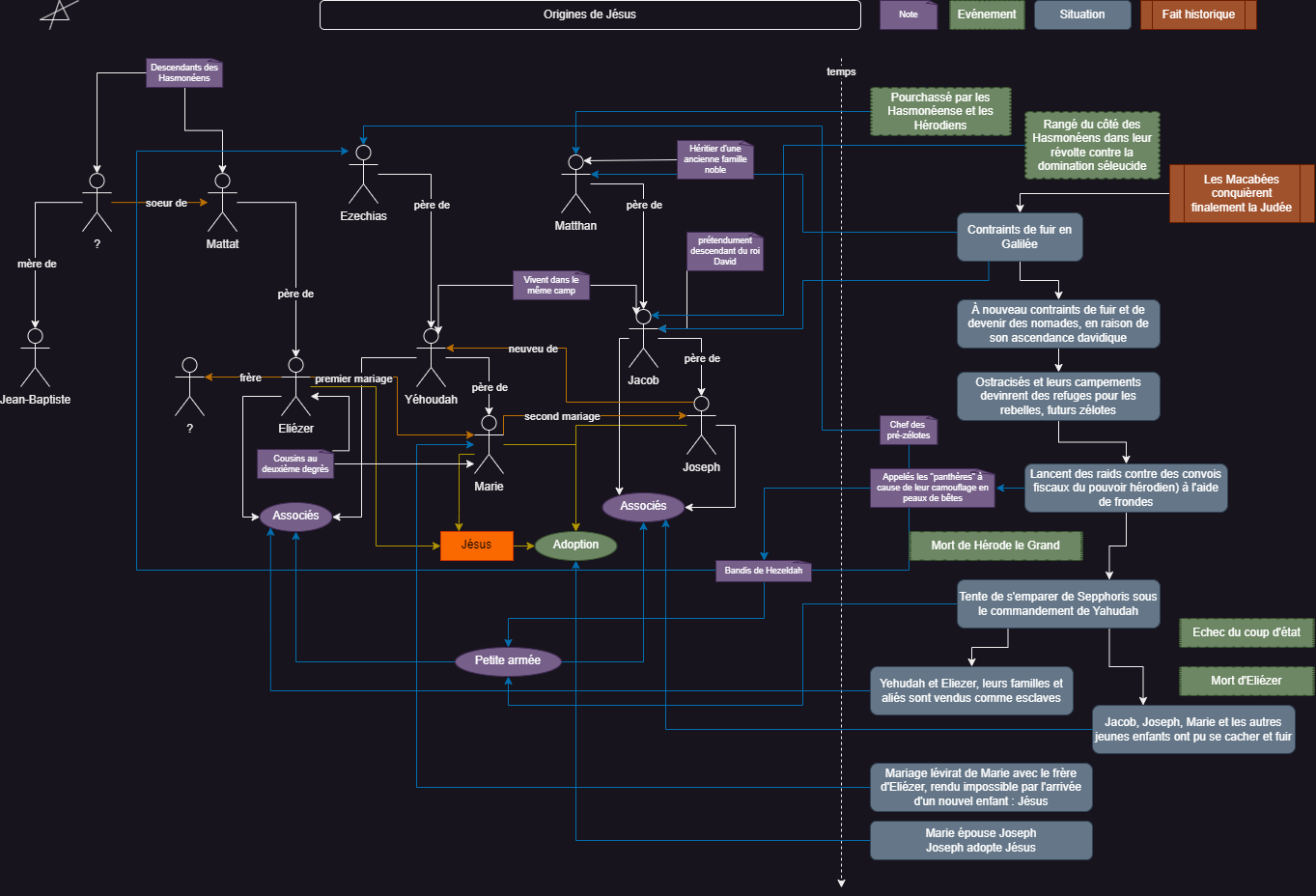Babelia : OYAGAAWOA_IWOGEIEMI
Image 0
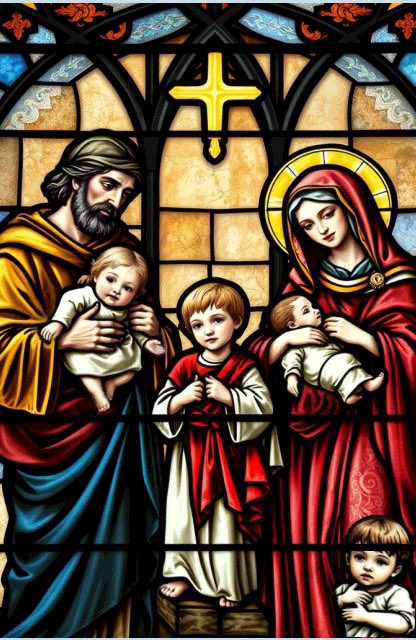
Image 1 (target of the link)
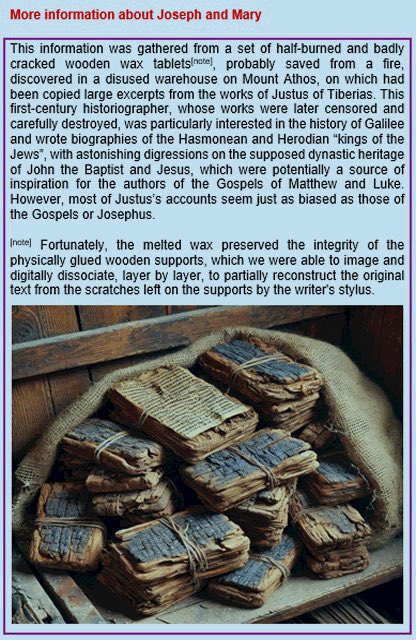
More information about Joseph and Mary
This information was gathered from a set of hatt-burned and badly cracked wooden wax tabletnote probably saved from a fire, discovered in a disused warehouse on Mount Athos, on which had been copied large excerpts from the works of Justus of Tiberia. This first(century histogriographer, whose works were lated censored and carefully destroyed, was particularly interested in the history of Galilee and wrote biographies of the Hasmonean and Herodian "kings of the Jews', with astonishing digressions on the supposed dynastic heritage of John the Baptist and Jesus, whith were potentially a source of inspiration for the authors of the Gospels of Matthew and Luke. However, most of Justus's accounts seem just as biased as those of the Gospels or Josephus.
[Note] Fortunately, the melted wax preserved the integrity of the physically glued wooden supports, which we were able to image and digitally dissociate, layer by layer, to partially reconstruct the original text from the scratches lett on the supports by the writer's stylus.
Image 2
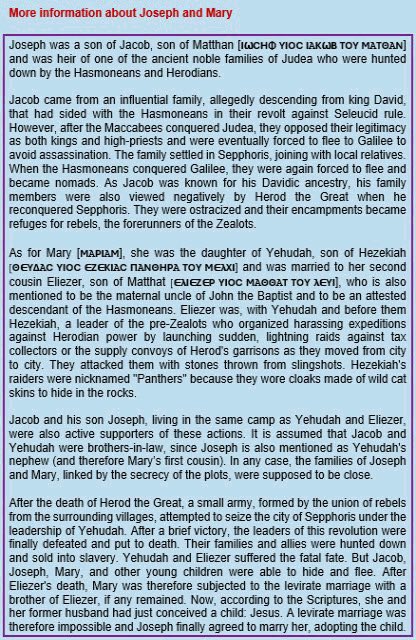
More information about Joseph and Mary
Joseph was a son of Jacob, son of Matthan [IωCHΦ YIOC IAKωB TOY MATΘAN] and was heir of one of the ancient noble families of Judea who were hunted down by the Hasmoneans and Herodians.
Jacob came from an influential family, alleged, descending from king David. that had sided with the Hasmoneans in their revolt against Seleucid rule. However, after the Maccabeess conquered Judea, they opposed their legitimacy as both kings and high-priests and were eventually forced to flee to Galilee to avoid assassination. The family settled in Sepphoris. joining with local relatives. When the Hasmoneans conquered Galilee, they were again forced to flee and beceme nomads. As Jacob was known for his Davidic ancestry, his family members were also viewed negative, by Herod the Great when he reconquer. Sepphoris. They were ostracized and their encampments became refuges for rebels, the forerunners of the Zealots.
As for Mary [MAPIAM], she was the daughter of Yehudah, son of Hezekiah [ΘεYΔAC YIOC εZεKIAC ΠANΘHPA TOY MελXΙ] and was maried to her second cousin Eliezer, son of Matthat [εΝεZεP YIOC MAΘΘAT TOY λεYI] who is also mentioned to be the maternal uncle of John the Baptist and to be an attested descendant of the Hasmoneans. Eliezer was, with Yehudah and before them Hezekiah, a leader of the pre-Zealots who organized harassing expeditions against Herodian power by launching sudden. lightning raids against tax convoys of Herods garrisons as they moved from city to city. They attacked them with stones thrown from slingshots. Hezeldah's raiders were nicknamed "Panthers" because they wore cloaks made of wild cet skins to hide in the rocks.
Jacob and his son Joseph. living in the same cemp as Yehudah and Eliezer. were also active supporters of these actions. It is assumed that Jacob and Yehudah were brothers-in-law, since Joseph is also mentioned as the Yehoda's nephew (and therefor Mary's first cousin). In any case, the families of Joseph and Mary, linked by the secrecy of the plots, were supposed to be close.
After the death of Herod the Great, a small army, formed by the union of rebels from the surrounding villages, attempted to seize the city of Sepphoris under the leadership of Yehudah. After a brief victory, the leaders of this revolution were finally defeated and put to death. Their families and allies were hunted down and sold into slavery. Yehudah and Eliezer suffered the fatal fate. But Jacob, Joseph, Mary, and other young children were abble to hide and flee. After Eliezer's death, Mary was therefore subjected to the levirate mariage with a brother of Eliezer, if any remained. Now, according to the Scriptures, she and her former husband had just conceived a child: Jesus. A levirate marriage was therefore impossible and Joseph finally agreed to marry her, adopting the child.
Image 3
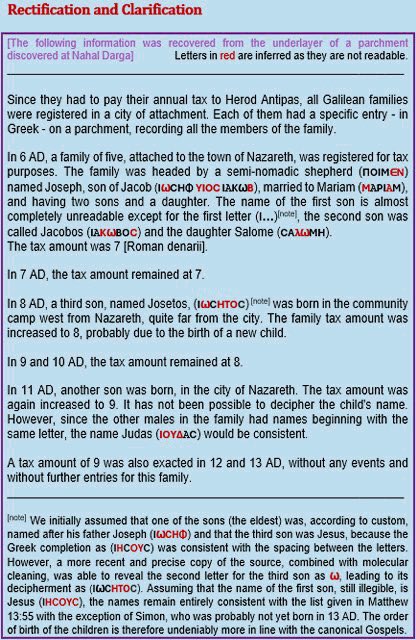
Rectification and clarification
The following information was extracted from the underlay of a parchment discovered at Nahal Darga. Letters in red are deducted as they are not legible.
Since they had to pay their annual tax to Herod Antipas, all Galilean families were registered in a city of attachment. Each of them had a specific entry - in Greek - on a parchment, recording all the members of the family.
In 6 AD, a family of five, attached to the town of Nazareth, was registered for tax purposes. The family is headed by a semi-nomadic shepherd ΠOIM[εN] named Joseph, son of Jacob ΙωCHΦ YIOC IAKω[B], married to Mariam [MAPIAM] and having two sons and a daughter. The name of the first son is almost totally illegible except for the first letter [I...] note, the second son was called Jacobos IAKωBO[C] and the daughter Salome [CAλωMH]. The tax was 7 [Roman denarii].
In A.D. 7, the tax remained at 7.
In A.D. 8, a third son, named Josetos [IωCHTOC] note, was born in the community's camp, west of Nazareth, quite far from the city. The family tax is increased to 8, probably due to the birth of a new child.
In 9 and 10 AD, the tax remained at 8.
In 11 AD, another son was born in the city of Nazareth. The tax was again increased to 9. It has not been possible to decipher the child's name. However, as the other men in the family had names beginning with the same letter, the name Judas (IOYΔAC) would be consistent.
A tax of 9 was also levied in AD 12 and 13, with no events occurring and no further entries for this family.
[Note] We initially assumed that one of the sons (the eldest) bore, according to custom, his father Joseph's name I[ωCHΦ] and that the third son was Jesus, because the Greek completion [IHCOYC] was consistent with the spacing between the letters. However, a more recent and precise copy of the source, combined with molecular cleaning, revealed that the second letter of the third son was ω, allowing it to be deciphered as [IωCHTOC]. Assuming that the name of the first son, still illegible, is Jesus I[HCOYC], the names remain entirely consistent with the list given in Matthew 13:55, with the exception of Simon, who was probably not yet born in 13 AD. The order of birth of the children is therefore undeniably more in line with the canonical Gospels.
